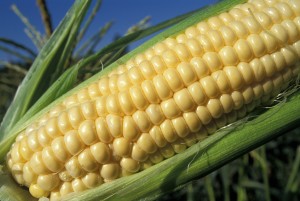
 USDA just announced its approval of a genetically engineered (GE) corn trait that is unique from other GE traits on the market: it’s engineered specifically for ethanol production (the enzyme breaks down starch into sugar). Once again, no independent study on environmental and food safety impacts was conducted, even though this form of the enzyme alpha amylase may cause food allergies in people who inadvertently consume this corn. Humans have never been exposed to this form of alpha amylase.
USDA just announced its approval of a genetically engineered (GE) corn trait that is unique from other GE traits on the market: it’s engineered specifically for ethanol production (the enzyme breaks down starch into sugar). Once again, no independent study on environmental and food safety impacts was conducted, even though this form of the enzyme alpha amylase may cause food allergies in people who inadvertently consume this corn. Humans have never been exposed to this form of alpha amylase.
We’ve learned from other GE contamination events that complete segregation is impossible.
While numerous contamination events have been documented around the world, no event has received more public attention than the discovery of Aventis’ StarLink corn in the human food supply—a variety not approved for human consumption. In 1999, Iowa farmers planted less than 0.4 percent of their corn to StarLink. By harvest time, half the harvests registered positive for the GE variety.
After this discovery, seed companies, farmers, processors and food makers spent more than one billion dollars trying to eradicate StarLink. Three years after StarLink was found in the food supply and pulled from the market, contaminated grain still pervaded the nation’s corn supply. In 2003, Aventis agreed to pay $110 million to settle claims from corn growers who did not grow StarLink but were hurt by the declining market for U.S. corn because of the contamination. Neil E. Harl, a professor of economics at Iowa State University, estimates that Aventis has paid out more than $500 million to farmers, food processors and grain handlers. Experts agree that it will take years to remove StarLink from the human food supply.
USDA and food industry representatives admit that if the GE corn introduced today — trade name Enogen — enters the food supply, it will negatively impact food quality.
